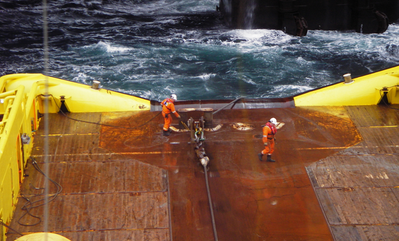A recent accident near Busan, South Korea resulted in the sinking of a tugboat after one of the towing cables snapped and recoiled, striking one side of the tug boat. The crew members were found unconscious and were later pronounced dead in a nearby hospital. An investigation will start to find the exact cause of the accident.
Noting the importance of safety in maritime transports, and building from its experience in transport engineering as well as maritime operations, Netherlands-based HMC has developed a method to calculate stability aspects of vessels engaged in towing and anchor handling operations. This method has primarily been used as an engineering tool for HMC’s marine services projects, but the company managed to integrate its tool into existing equipment on board like stability computers.
HMC’s safety system SafeTOW aims to facilitate safe operations for those with a responsibility for safeguarding safety aspects in connection with anchor handling and towing.
For vessels that are used for anchor handling, while at the same time are utilizing their towing capacity and/or tractive power of the winches, calculations must be made showing acceptable vertical and horizontal transverse force/tensions to which the vessel can be exposed. The calculations must consider the most unfavorable conditions for transverse force/tensions. Calculations have to be made for the maximum acceptable tension on wire/chain, including the maximum acceptable transverse force/tension that can be accepted in order for the vessel’s maximum heeling to be limited to one of the following angles. The heeling moment must be calculated as the total effect on the horizontal and vertical transverse components of force/tension in the wire or the chain.
SafeTOW represents the current maximum allowable towline force. For every loading condition, the maximum allowed towline force is displayed giving the user the possibility to act in time. SafeTOW calculates the dynamic stability of the vessel in combination with the loading condition to assess the stability of the tug during an anchor handling operation. SafeTOW allows the user to safely operate an anchor handling operation within the operational limits set by SafeTOW, which indicates the maximum force on the towline.
The danger of a catastrophic loss of stability capsizing a tug cannot be underestimated, HMC said. Unfortunately, it is one of the quickest ways to lose a vessel. Officers have only minutes to recognize the situation which is irretrievable. For a tug master, the safety of the crew and vessel are priority number one.

















